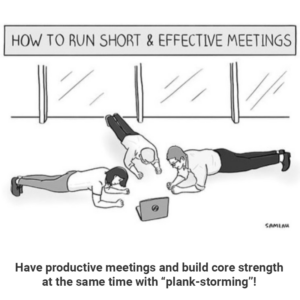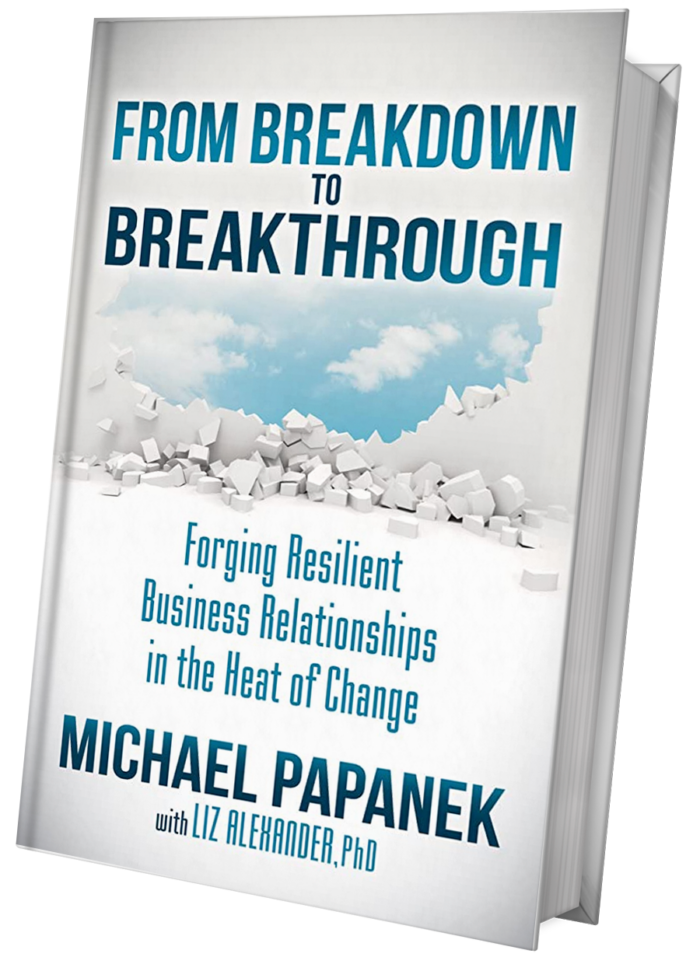As part of a large organizational change effort, a IT manager (“John”) was having a lot of trouble working with an external consultant (“Robert”) who was hired to assist with some technical aspects of the change initiative*. The internal manager, who is a senior leader in the organization and had worked there for many years, thought that the consultant was arrogant, pushy, disrespectful and power-hungry.
“He really annoys me”, John told me. “Robert seems to have no respect for the fact that we have all been here for years and do know what we are doing. Yes, we have made some mistakes, and yes, we need to change, but who does he think he is? He is so condescending in his emails and other communications to us! All he cares about is looking important to the CEO, as if we were not the ones who will make any changes actually happen. I want our transformation to succeed, but frankly I would rather see Robert fail. He tries to pressure me to do what he wants and has even cut me out of key meetings with the executive team. He wants to be the big boss? Well, I promise you, I will be here long after he is gone.”
I knew that neither Robert nor John was going anywhere soon. Since they needed to work together to achieve the goals of the change, the relationship had to work. I spoke with Robert and got an earful.
“I want to be collaborative and work well with the managers, but frankly why should I bother? If these people had any real skill or expertise, they wouldn’t need me to begin with! If it was up to me, I would replace the whole management team, but I know the CEO will not support that. Why should I try to get their input when they created this mess to begin with? If I tried to get every one of these ‘stakeholders’ all aligned and in agreement, it would 1) take forever and 2) result in failure. I am here to get results. They just need to get on board.”
Robert was quite skilled in his specialty and had advice to offer that would help the organization, but he also had some blind spots when it came to interpersonal skills and relationships. John knew a lot about the business and the organization that Robert, as an external, did not know, but John had made some poor decisions over the years that had lead to the current unsustainable situation in the organization.
John and Robert were in a bind that seemed intractable: both had very strong beliefs about the other person, and both felt he was completely right and the other person was wrong. Their inability to work well together was wasting time and energy, and adding drama and complexity to an already difficult change effort.
John agreed to have me attend some of his meetings with Robert so I would “see how bad he really is.” After observing a meeting, I debriefed with John, who started out by saying, “See! Now you know what I am dealing with! Can you believe this guy? Now will you talk to him and get him to change, or at least support me with the executive team so we can get rid of him?” Though we were in the exact same meeting, I did not have the same experience as John. To me, Robert did have a different communications style from the internal managers, but had not said or done anything I felt was over the top or justified the strong feelings John had.
But what I thought was irrelevant.
How to Change Results by Changing Perceptions
I suggested to John that there was a way for him to improve his working relationship with Robert, even without Robert’s explicit agreement or awareness. The first step would be for John to examine his assumptions and beliefs about Robert and gain awareness of how that impacts John’s behavior when he interacts with him. John did not see how this would help and was even a bit insulted that he might have any role in the problem, but agreed to give it a try before he escalated this issue to senior management.
My hypothesis was that John was stuck in what Chris Argyris, in his book “Overcoming Organizational Defenses”, calls a “reflexive loop”. This is when we have a strong belief (Argyris calls them ‘noble certainties”), which drives us to ignore data that would not fit that belief and ‘select’ or emphasize data which supports that belief. We also know from recent breakthroughs in neuroscience that our brains physically create these loops, which then become stronger over time (“neural binding”) and actually force out alternative views. John had an existing belief that Robert was mean and arrogant and as a result only experienced Robert that way, interpreting anything he did from that perspective and discounting any signs to the contrary.
Was John ‘justified’ in this belief? Sure. The arrogant and ambitious consultant is a character we all know well. Was it “the truth”? Maybe not. In “The Political Mind”, author George Lakeoff explains that our minds, even our eyes, do not act as recorders, but more as storytellers: everything we experience is interpreted by our brains and placed into an existing neural pathway or “frame”. Changing our perceptions requires changing the ‘story’ we already have in our minds and creating a new frame into which we can fit the information. John had reached the point where he believed Robert to be either mean, crazy or stupid.
All too often in organizations I have heard a similar refrain: if only the other person or group was not “so crazy” everything would be OK. We see this in our national discourse as well. Leaders of countries that oppose US policies are “crazy”. Political opponents of new programs are “mean” and don’t care. Advocates for spending (or taxes) must be “stupid”.
This framework does not tend to lead to resolution of conflict, but rather to escalation, as John was anticipating. Do we expect that the other party will suddenly agree: “You know, you are right, I am stupid”? Exactly what actions can one take with someone who is crazy? How would you react to someone who treats you as if you were mean? John’s across the board resistance was also supporting Robert’s existing frame that the internal managers were “stupid”. Their reflexive loops were reinforcing each other.
Breaking the Dynamic
I asked, “John, what if we assumed for a moment that Robert was not mean, crazy or stupid. How would you explain his behavior?” With this question, I was suggesting we entertain the possibility of a different reason for Robert’s behavior. Although he was initially resistant, John was able to brainstorm some alternative explanations for Robert’s behavior. Without accepting that Robert was not mean, John started to list other“reasons for why Robert might take the actions he does. After listing some possibilities, John was now open to hearing my suggestions, which included the frame that Robert was doing exactly what the internal executives wanted him to do, and was under massive, maybe unrealistic, pressure from them to achieve results quickly.
Without easy access to his “this individual is to blame” frame, John started to focus more on the systemic forces that were acting on Robert and driving his behavior. In my discussion with him, John did not have a resounding insight or moment of clarity. What he did do was critical: he understood his own reflexive loop. He started to form some empathy with Robert and replace his righteousness/defensiveness with curiosity.
I spoke with John after his next meeting with Robert. He was very excited: “I think maybe something has shifted,” he said. “Robert seemed to be much more open to my ideas, and I was less intimidated by him, less pushed around. I was even able to give him some feedback about going behind my back. I don’t think he will do that again.” John and Robert never became best pals, but they were able to achieve important results and work together with much less stress.
When John started to treat Robert as a whole person and not a caricature, Robert responded in kind.
The experience with Robert also had an impact on John’s other relationships at work and even at home. John is starting to change a meta-frame he has held with many people. He is able now to notice when he is acting from “noble certainties” and instead use a new frame of empathy for the other person. His new frame causes others to create new frames as well.
*Names and other details have been changed to protect individual identities.







